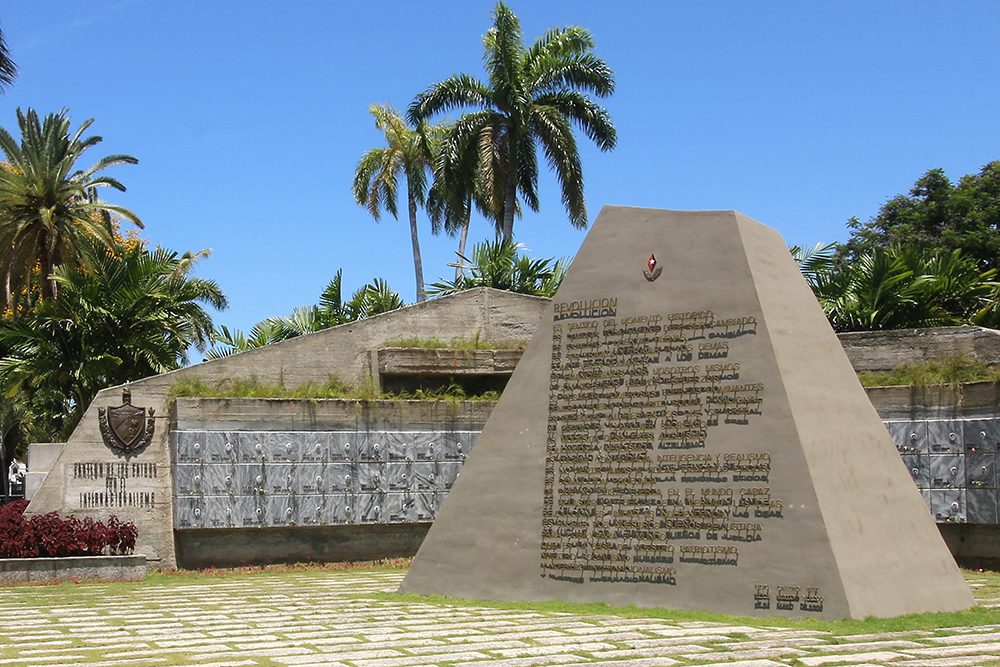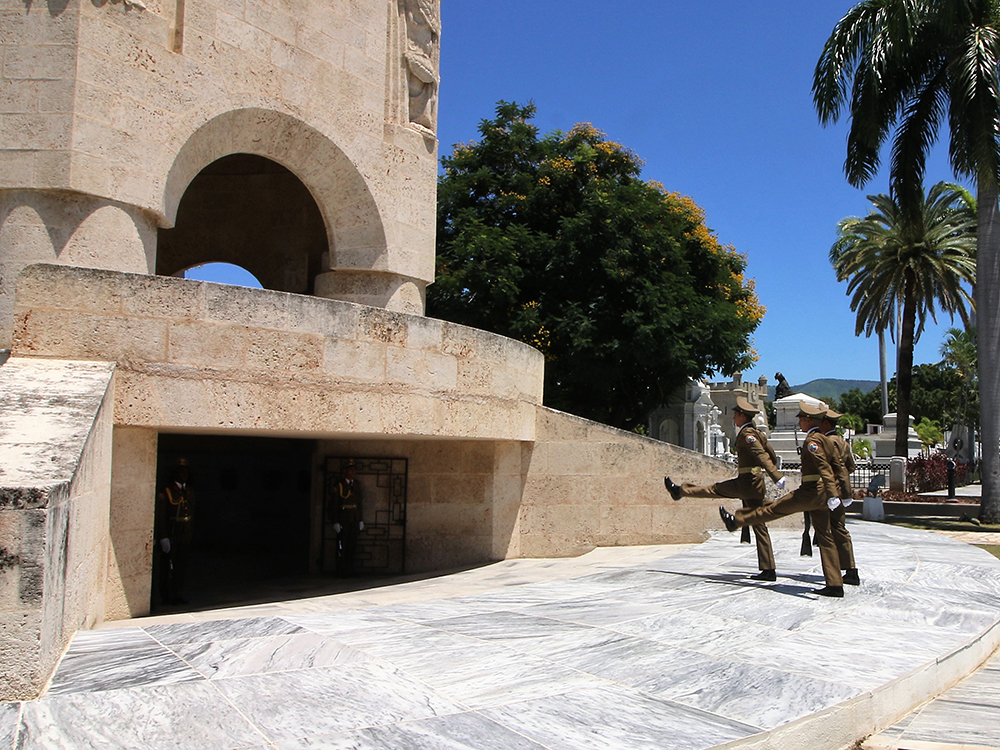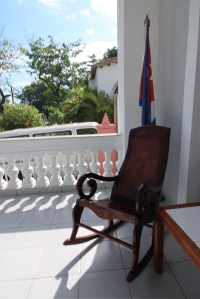
“Revolution is having a sense of the historic moment; it is changing everything that must be changed; it is full equality and freedom; it is being treated and treating others like human beings; it is emancipating ourselves on our own and through our own efforts; it is challenging powerful dominant forces in and beyond the social and national arena; it is defending the values in which we believe at the price of any sacrifice; it is modesty, selflessness, altruism, solidarity, and heroism; it is fighting with courage, intelligence and realism; it is never lying or violating ethical principles; it is a profound conviction that there is no power in the world that can crush the power of truth and ideas. Revolution is unity; it is independence, it is struggling for our dreams of justice for Cuba and for the world, which is the foundation of our patriotism, our socialism, and our internationalism.”
These are the words spoken by Fidel Castro at the May Day celebrations in 2000. I’m genuinely inspired by these words – and it’s not hard to see why many of the Cuban people dearly loved their hallowed leader, in life and in death. If a person can be remembered by what they said (rather than what they did) then, surely, these words are the ultimate in epitaphs. They are inscribed on a twelve-foot high marble slab that stands next to Castro’s memorial, the final resting place where his ashes were laid to rest in the glorious Santa Ifigenia Cemetery; his dying wish was that a ‘cult of personality’ should not be permitted after his death, which meant that he wanted no public places, streets, parks or institutions to bear his name and no statues, monuments or busts should depict a likeness of him. The granite monument in which his ashes are very simply interred (in a rock shaped like a corn kernel; the inspiration for the shape of the tomb was a line from a José Martí poem: “All the glory of the world fits in a single kernel of corn.”) next to the impressive monument to Cuba’s other national hero, Jose Marti, who was referred to as ‘The Apostle of Cuban Independence’ and inspired the revolution that led to Cuba’s first stint as an independent state back in 1868 (which you knew about already because you read part 1 of this essay … didn’t you?) which is just a stone’s throw away.
Not that you’d be throwing any stones of course, since both monuments are guarded by armed soldiers, with a goose-stepping changing of the guard ceremony taking place every half-hour – necessary because of the extreme heat in which these guards have to stand, albeit that they are afforded at least a little shade whilst on duty.

The Santa Ifigenia Cemetery is a remarkable place, filled to the brim with the remains of ‘All of the revolution’s history’, including Antonio Maceo and Carlos Manuel de Céspedes del Castillo (the chap who freed his slaves and declared that first independence from Spain in 1868) as well as not-so-revolutionary Emilio Bacardi (son of the founder of the Bacardi dynasty) amongst many other illustrious guests. It’s also filled with thousands of tourists, who daily traipse through, marvelling at the magnificence that such bastions of revolution reside in. I’m sure some, like myself, find the juxtaposition of concept versus reality a little puzzling, but it is definitely a must-see when you do visit Cuba. It is quite a sight to see.
So, starting with the dead always seems a little unusual perhaps, but it is impossible to visit Cuba and be unaware of the legacy that Fidel Castro leaves. For most of the people, he was their hero, who liberated them from oppression and guided Cuba to a better life. To many outsiders, he was a wicked despot who recklessly womanised and ran Cuba’s economy into the ground, silencing all opponents before they had a chance to cast any kind of aspersions on his leadership – he ruled with an iron fist. I find it difficult to marry the reality of the human being with his magnificent ideals, but it is always worth remembering that he was a man, a simple human being with all the flaws and complex emotions and feelings that informed (or clouded) his judgements of the best course of action in any given situation. I choose to be inspired by his words, if not his actions, although I’m not actually planning any political revolutions this month – I’ve still got loads of photos to edit!
Santiago Di Cuba is a colourful and vibrant place, full of sunshine and joy. Cubans go about their daily business with a calm, laid-back approach, which is fairly typical of island life in my experience. The faded elegance is in evidence almost everywhere, with an intriguing mix of half-millennial-aged, archetypal blue-and-white painted buildings and contemporary architecture; wide, tree-lined boulevards lead directly into the older quarters of the town so that you are travelling through varying degrees of ‘passability’ – sometimes you simply cannot overtake in the very narrow streets! The bright sunlight makes everything take on a more vibrant appeal.
In central Santiago, appropriately built atop the largest hill, lies Céspedes Park which is surrounded by some of Cuba’s most imposing architecture – the magnificent Catedral de Nuestra Señora de la Asunción (Cathedral Basilica of Our Lady of Assumption) dominates the square.

Two wall plaques offer a small clue about the building’s history:

I was deeply intrigued by the meaning of these plaques, which make more sense when translated from Old Latin so that they tell the story of the current building, erected in 1922 to commemorate the first building on this site, constructed four centuries earlier. It seems that there have been several buildings over the centuries that have been destroyed by pirates, inadequate design and earthquakes, but this current building has also been spruced up to celebrate Santiago’s quincentennial in 2015. We didn’t have time to explore inside and frankly, it was so hot we simply settled for a long cold drink at the Casa Grande, which flanked the square on another side. Directly opposite lies the Cuban National Bank building – very much a modern construction, all glass and simple lines. From one corner of the square, you can see quite how high the hill is by looking across to the hills opposite. Finally, the traditional blue painted wood and white-washed walls enclose the final side of the square. The overall effect is of a very mixed and lengthy history, which tells Cuba’s story in microcosm.
We came upon a sign on a side-street that just made me laugh loud and long… you have to admit, this guy is honesty personified!

One of the most memorable things about Cuba is the people. Not just because that’s what Communism is ultimately about, but because they are like no other people I’ve ever come across – immensely friendly, likeable and charming. I recognise that there’s a huge element of laying it on fairly thickly for the tourists, but many people were just going about their daily business, getting on with their lives, oblivious to visitors and all else besides, probably planning what to have for tea. Who cares if shutters are clicking all over the place when you have such a life to be living?
I am often reticent about taking photos of people because I’m aware that there are many who a) just don’t like to have their photo taken (I fall into this category!) and b) feel that the photographer is ‘taking’ something that doesn’t really belong to them – in an almost primaeval manner where the image of the person contains a part of their soul.
Fortunately for the photographer, in these days where virtually all the world’s people have smartphones, this issue is less thorny than it used to be, although I think a part of me still does subscribe to this idea. Certainly, in Cuba, most people are VERY happy for tourists to snap away, capturing people doing *crazy Cuban stuff*, so this actually encouraged me to take photos of people, much more than I usually do. Yes, it is perhaps a little staged for the tourists, but it does give peeple something to do and it has an infectious charm that cannot be denied.
Everywhere you go, it’s likely that someone will be serenading you, mostly with some kind of salsa (that’s the dance, not the edible accoutrement to barbecued meat!) … individuals, small groups and entertainers abound. Ariba, Ariba! It made me feel like dancing!
Cuba – what a fascinating and beautiful place to visit!

Thanks for reading… see you next time!


























